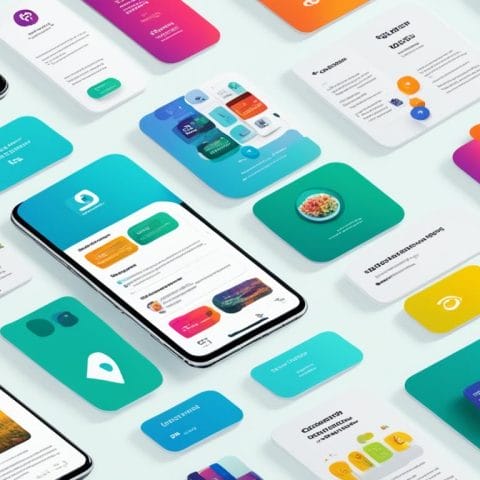Did you know that blended learning can boost employee engagement and retention by 70%? This shows how powerful it is to mix traditional classroom learning with online training. Today, businesses see the value of tools and technologies for blended learning. They help train both in-person and remote workers well.
Blended learning is more than a trend. It’s a way to make learning flexible, adaptable, and collaborative. For companies aiming to improve their training, using the best tools for blended learning is key. With the right tools, businesses can make learning fun and effective. Hyperspace is a top choice for companies facing blended learning challenges with its custom tools and technologies.
Key Takeaways
- Blended learning can boost employee engagement and retention by up to 70%.
- Integrating both in-person and online training enhances learning flexibility.
- Effective blended learning tools create engaging and collaborative learning environments.
- Measurable outcomes are achievable with the right training technologies.
- Hyperspace is a leading solution for tailored blended learning strategies.
Understanding Blended Learning
Blended learning mixes traditional classroom teaching with online learning. It uses hybrid learning concepts that change to meet students’ needs. This shift from old teaching methods to new, more flexible ones is key, especially in corporate training.
Blended learning includes both real-time and self-paced training. As technology gets better, companies must blend these methods into their training plans. It’s important to keep training interesting and engaging.
Changes in culture are changing how we learn. People want meaningful development opportunities. This means understanding blended learning explained is key. Things like what learners want and tech access are important in making these programs.
There are many tools to improve blended learning. Each tool has its own challenges. With a good understanding of these, teachers can make better training programs. For more info, check out this guide on blended learning tech.
| Blended Learning Format | Description | Advantages |
|---|---|---|
| Synchronous Learning | Real-time learning sessions where instructors and students interact simultaneously. | Facilitates immediate feedback and peer interaction. |
| Asynchronous Learning | Self-paced courses allowing learners to access materials at their convenience. | Offers flexibility in scheduling and accommodates varied learning speeds. |
| Hybrid Learning | A combination of in-person and online activities that caters to different learning styles. | Increases engagement through diverse learning modalities. |
Blended learning shows a move to adapt education to today’s needs. Knowing its basics is key for success in teaching.
Benefits of Blended Learning
Blended learning has many benefits for companies wanting to improve their training. It makes training more engaging by mixing in-person and online parts. This keeps learners interested and motivated.
It also offers flexibility. Learners can work at their own speed, fitting it into their busy lives. This way, they learn better because they can use their preferred learning methods.
Blended learning makes training available to more people, no matter where they are. This makes learning more inclusive. It helps create a diverse group where everyone can learn together.
Blended learning helps more people finish their training. It gives learners immediate feedback, chances to work together, and learning paths that fit them. This helps employees take control of their growth.
Companies that use blended learning see their workers keep getting better at their jobs. This makes employees happier and helps the company grow. A good blended learning program makes training more effective and builds a skilled workforce.
Key Components of Blended Learning Programs
Blended learning programs are effective because they combine traditional teaching with online tools. This mix makes learning better. It includes both in-person classes and online materials.
Key elements include:
- Learning Management Systems (LMS): These systems help manage course content, track student progress, and make communication easier.
- Digital Content: This includes videos, quizzes, and interactive modules that help students learn in different ways.
- Evaluation Methods: These tools check how well students understand the material and how well the program works. They use both formative and summative assessments.
Collaborative projects are also key. They help students work together and share ideas. This makes learning more interactive and fun. Feedback lets students share their thoughts, helping everyone get better at what they do.
| Component | Description | Benefits |
|---|---|---|
| Learning Management Systems | Platform for managing courses and communications | Streamlined administration and progress tracking |
| Digital Content | Online videos, PDFs, and interactive assignments | Flexible learning pace and varied engagement |
| Evaluation Methods | Formative assessments and performance metrics | Informed improvements and personalized learning paths |
| Collaborative Projects | Group assignments and discussions | Enhanced critical thinking and teamwork skills |
| Feedback Mechanisms | Surveys and peer reviews | Encouragement of communication and adaptation |
Top Learning Management Systems (LMS)

Learning Management Systems (LMS) are key for blended learning. They help deliver, track, and manage educational content. When picking the best LMS, look for features that improve learning and fit into school systems well.
Features of an Effective LMS
An effective LMS needs to have certain features. These include:
- User-Friendly Interface: Makes it easy for teachers and students to use.
- Tracking Capabilities: Shows detailed reports on how well users are doing and how much they’re involved.
- Integration Options: Connects with other tools like software for making content and apps for talking.
- Analytics: Gives insights on how well students are doing, helping teachers see what needs work.
Popular LMS Options
Many groups choose certain LMS options for their strengths:
| LMS Option | Strengths | Key LMS Features |
|---|---|---|
| Canvas | Scalability | Works well with other apps |
| Moodle | Flexibility | Open-source and highly customizable |
| Blackboard | Comprehensive Support | Has strong tools for managing content and analyzing data |
| Google Classroom | Simplicity | Works smoothly with Google tools |
Online Collaboration Tools for Enhanced Engagement
In today’s schools, using collaboration tools for blended learning is key. These tools help students connect and work together, even if they’re far apart. Tools like Slack, Microsoft Teams, and Google Workspace let students share ideas, talk about topics, and do group projects easily.
Good online collaboration makes learning more exciting. With discussion boards and group chats, students feel part of the class. They get to share their thoughts and ask questions. This helps everyone learn from each other, which is vital in blended learning.
Virtual collaboration tools do more than just help students talk in real-time. They also offer spaces for working together on projects. These places help keep everyone on track and make students feel they belong, which is key for success.
- Discussion Boards: Encourage thoughtful exchanges about course material.
- Group Chats: Allow immediate communication among learners.
- Shared Project Spaces: Facilitate collaborative work and resource sharing.
Using these collaboration tools can make online learning exciting. By choosing the right tools, every student’s voice is heard and valued.
Tools and Technologies for Blended Learning

Choosing the right tools and technologies is key to making blended learning work well. There are many options out there, so it’s important to pick ones that fit your learning goals. Tools for innovative learning and virtual classrooms are essential in today’s changing education world.
Innovative Learning Technologies
Innovative learning technologies have changed how we deliver and use educational content. Tools like interactive videos, engaging simulations, and apps for creating content make learning more exciting. These tools keep learners interested by using different media formats.
They help cater to various learning styles, making education more personal.
Virtual Classroom Solutions
Virtual classroom tools help students and teachers interact in real time, mimicking traditional classrooms. They support discussions, group projects, and quick feedback in a digital setting. Tools like Zoom, Microsoft Teams, and Google Meet offer features like breakout rooms and screen sharing.
This makes learning more interactive. Picking the right virtual classroom tool can boost student participation and support successful blended learning.
Gamification in Blended Learning
Gamification in education makes learning fun by adding game-like elements to blended learning. It makes learners more engaged and motivated. Educational games are key in making training programs better.
Types of Educational Games
There are many types of educational games that help make gamification in education work well. These include:
- Serious Games: These games are made for learning and challenge learners in real-life situations.
- Quizzes: Quizzes make learning fun and let learners check their knowledge and see how far they’ve come.
- Challenges: Challenges bring out a competitive spirit among learners and help them improve their skills.
Benefits of Gamification
Gamification has many benefits that go beyond just playing games. The main advantages are:
- Increased Participation: Games make learners more likely to take part, making the learning process more interactive.
- Improved Retention of Material: Games help learners remember information better by making it fun to repeat.
- Promotion of Healthy Competition: Friendly competition motivates learners to do their best, leading to better learning results.
Adding gamification to blended learning can make training better. To learn how to do this well, check out this resource. Using engaging content helps meet learning goals and makes educational games more effective.
Webinars and Their Role in Blended Learning
Webinars are now a big part of blended learning. They connect traditional classroom learning with online learning. Webinars let people talk and ask questions in real time, making learning more engaging.
Webinars are flexible and can cover many topics. They fit into different schedules, making it easy for people to join. This flexibility helps more people attend and stay interested in the training.
- Scheduling: Pick the best times to meet, thinking about everyone’s schedule.
- Engagement: Use tools like polls and group chats to keep people involved.
- Feedback: Ask for feedback after the webinar to make future ones better.
By using these tips, organizations can make the most of webinars. This makes training better and helps people learn more from their courses.
| Aspect | In-Person Training | Webinars |
|---|---|---|
| Accessibility | Limited to physical location | Available globally |
| Cost | Travel and accommodation expenses | Generally lower costs |
| Interactivity | Physical interaction | Online engagement tools |
| Flexibility | Set schedules | Varied schedules available |
Utilizing Content Creation and Authoring Tools
In today’s fast-changing education world, tools for making content and authoring for e-learning are key. They make making digital content development easier and help teachers make learning fun and interactive. This way, they meet the different ways people like to learn.
Articulate 360 and Adobe Captivate are top choices for these needs. They have features like multimedia, quizzes, and simulations to help explain tough topics. Using authoring tools for e-learning, teachers can make courses that are both fun and informative. This helps learners connect better with the material.
When using these tools, it’s important to set clear goals, use different types of content, and make sure courses work on mobile devices. This makes learning easy for everyone. By using content creation tools well, schools can make their courses better. This keeps learners interested and committed to learning.
Creating good digital content has big benefits. It helps learners remember more and lets them learn at their own pace. Teachers now have many tools to make learning environments that help everyone succeed.
Conclusion
Blended learning tools change how we learn, mixing old and new ways. They make learning fun and personal for everyone. By using tools like Learning Management Systems and online collaboration, we can make learning better for all.
These tools help us grow in our careers and keep up with new trends. Staying updated helps us stay ahead in our jobs. The right mix of technology and methods makes learning meaningful and helps us succeed.
Looking ahead, blended learning will keep evolving. By keeping up with new trends, we can help our employees grow and stay competitive. The key is to use the right technology and methods for great learning experiences.
FAQ
What is blended learning?
Blended learning mixes traditional classroom teaching with online learning. It lets learners enjoy both real-time and self-paced training.
What are the benefits of implementing blended learning?
Blended learning boosts engagement, flexibility, and access. Learners can pace themselves while still getting face-to-face interaction. This leads to better retention and higher completion rates.
What tools do I need for an effective blended learning program?
You’ll need Learning Management Systems (LMS) to manage content. Also, online collaboration tools for communication and content creation tech for engaging materials. Moodle, Canvas, and Blackboard are popular LMS choices.
How do online collaboration tools enhance blended learning?
Tools like discussion boards and group chats help with communication and teamwork. They create a supportive online space for sharing knowledge and interacting with peers, key for blended learning success.
What role does gamification play in blended learning?
Gamification adds game elements to training, increasing engagement and motivation. Games, quizzes, and challenges lead to better participation and retention, making learning fun.
How can webinars be effectively integrated into blended learning?
Webinars combine online and in-person training with interactive discussions and Q&A. Engaging participants with interactive content and feedback helps improve future sessions.
What are content creation tools, and why are they important?
Tools like Articulate 360 and Adobe Captivate help educators make interactive, multimedia content. This is key for keeping learners engaged and relevant in blended learning.
What features should I look for in a Learning Management System?
Look for an LMS with an easy interface, progress tracking, tool integration, and analytics. These features improve the learning experience and support ongoing improvement.
How do innovative learning technologies contribute to blended learning?
Tools like interactive videos, simulations, and virtual classrooms create engaging learning experiences. They let instructors connect with learners in real-time, creating an immersive classroom-like environment.





